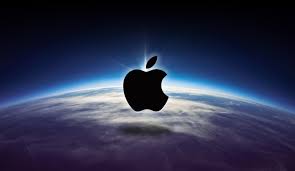Apple Card: Are the Limited Rewards Worth It for the Privacy?

In March, Apple revealed its first credit card: Apple Card, a thin slab of titanium that would provide shoppers with 3% cash back at Apple stores, 2% at anywhere Apple Pay is available, and 1% everywhere else.
Many observers quickly pointed out Apple Card’s limited earning potential for customers. Citi’s Double Cash card, for example, provides shoppers with 2% back everywhere, not just at stores with Apple Pay. Meanwhile, the Chase Freedom and Discover It card offer 5% cash back for shopping in categories that rotate quarterly.
While Apple can’t compete in terms of money to card holders, it does has a big focus on customer privacy. Apple Card has no numbers on it or a CVV, making it harder for identity thieves to steal credit card information. Apple also promises that it won’t track customer spending, and that Goldman Sachs and MasterCard — Apple’s partners in the venture — won’t sell any customer data to other companies.
With these features in mind, one question remains: Is Apple’s credit card worth it for the privacy benefits alone?
It depends on who you ask. In an email, Thad Peterson, senior analyst at the research and financial advisory firm Aite Group says the card could be worth it for some people — even with its inferior rewards. “The security is excellent,” Peterson says. “Apple Pay, when shopping online and used in the real world, uses a two-factor authentication model.”
Translation: In an effort to increase security, Apple’s combines a device’s number with a unique transaction code. Payments are authorized using fingerprint or facial recognition.
Peterson also applauds the card’s security-conscious design. “The physical card has no steal-able information on it, pretty much eliminating any counterfeit card fraud opportunities.”
Others are less worried about credit card security. Rich Jones, a self-taught financial advisor and co-host of the popular financial podcast Paychecks and Balances, says don’t sweat it. “When I lost my wallet earlier this year, I was able to disable it right from my credit card provider’s app,” says Jones, noting a common feature available for many credit cards. Even with a stolen card, Jones says he’s never had to—literally—pay the price for it. “I’ve also been able to dispute charges pretty easily with a favorable outcome,” he said.
“Privacy is a obviously hot topic these days, but it’s not enough for me personally to move away from my credit card setup,” Jones added.
Zach Honig, editor at large of The Points Guy, a site that provides information about credit card rewards, agrees that the security benefits of Apple Card are modest. “While limiting fraud does have the potential to simplify customers’ experience, the financial impact to an account holder is negligible,” he said.
Honig also pointed out that Apple Card users give up a big perk that many other cards come with: Airline and hotel loyalty points. It’s a trade off — in favor of cash back and a little extra security—that isn’t necessarily as attractive, he said. “Personally, I’d prefer to earn valuable travel rewards,” Honig concluded.
Some cards provide as much as 3 points—typically valued at 1 cent each — per dollar spent. That is triple what the Apple Card offers.
Meanwhile, customers of some cards can earn even more. For example, a Chase Sapphire Reserve card owner, for example, gets 3 cents in rewards for every dollar spent at any restaurant. When redeemed for travel, however Chase multiplies points by 1.5, making each dollar spent worth 4.5 cents for travel. This means those who’ve earned $ 100 in rewards can buy $ 150 worth of a plane ticket or hotel stay. Hand your waiter an Apple Card and you’ll only ever get 1 cent per dollar back.
But not everyone is a credit card pro who willing to put up with point systems and convoluted multipliers. If you’re one of the 39% of American credit card users in debt, Apple’s online tools may be a selling point. “Apple’s product provides a wealth of information related to purchase behavior and transactions by business category,” Aite’s Peterson points out. “The software allows customers to actively manage their card to potentially minimize interest expense.”
For example, the payment section of Apple’s Wallet app turns red when Apple Card owners pay a minimum amount on the card that would lead to owing more over time. Pay more and the app’s payment dial turns green, indicating that users won’t owe any interest.
Paula Pant, host of the Afford Anything podcast and author of the blog of the same name, says some card customers have broader needs. “Other than cash, some might prioritize perks like rental car coverage, purchase protection, price rewind or even customer service.”
Ultimately, choosing a credit card depends on the consumer’s needs. “Set your priorities in what you want in a card,” says Pant, “and then see if it meets your standards.”



